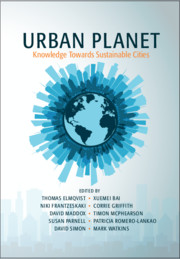Over the years, we have been deeply concerned about the abuse, misuse, and destruction of natural areas. We have been equally concerned about the systematic dismantling of the community and collective fabric. As a result, most cities across the world have been split into disparate and conflicting fragments.
Sadly, most governments and ruling elite continuously work towards dismantling the fabric of unity, sustainability, and justice. Such efforts are clearly reflected in the various policies and programs that, in most instances, are undermining larger public interest by stifling people’s voices, their participation in decision-making, and active governance.
These governments and the ruling elite are driven by a host of selective and discriminatory recognition policies and programs. They are obsessed with recognition – or, more accurately, the lack thereof – for people and nature, insofar as they relate to building stronger market forces that dictate the terms of development and principles of governance. To challenge this dominant phenomenon is a tough battle for those people who are committed to the many struggles for achievement of social and environmental equity and justice.
In Indian cities, for example, a majority of the people comprising the poor and lower-middle classes are constantly denied recognition on multiple grounds, to an extent that their right to live itself is often questioned. They are denied access to land, housing, food, water, sanitation, healthcare, education, and transport – to name just a few restrictions. It follows that today we find high instances of social tension and violence between people and communities. Such social divides are seen and experienced on the basis of caste, creed, religion, gender, and other identities. Cities are increasingly divided on the basis of identity politics and their landscapes are reconfigured in the form of distinct colonies of ghettoized affluence and abject deprivation.
This practice of selective recognition – and the government’s and ruling class’s mindset, which enables the practice – is also evident in matters relating to natural areas and environmental conditions. The case of Mumbai is an extreme example of abuse, misuse, and destruction of the vast extent of natural areas and open spaces that constitute nearly 50 percent of the total area of the city. Successive governments have consciously avoided mapping and documenting these areas. By leaving them out, government has allowed these areas to experience aggressive land filling and real estate development, as well as rampant destruction of the mangroves, wetlands, rivers, creeks, hills, and forests, largely by unscrupulous builders and developers. Governments are active in proposing further construction in these areas.
Only after many citizens’ movements in Mumbai demanding recognition of these natural areas and their environmental conditions has the city government begun documenting them for the first time in a development plan for the city. In fact, the first extensive mapping and comprehensive documentation of the natural areas of Mumbai, along with a clear action plan, was carried out by this author along with the Mumbai Waterfronts Center. A public exhibition which they held, titled “Open Mumbai,” exposed the lack of recognition of such vital assets and the rampant destruction of these areas, and, importantly, suggested a way forward.
The growing level of intolerance arising from and incited by such selective and discriminatory recognition phenomena is beginning to threaten the stability of cities. Levels of intolerance are leading to a state of aggression and violence, expressed in relationships between people at individual and collective levels, as well as between people, nature, and the environment.
Further, recognition deficit is steadfastly eroding the idea of cities. A constant state of denial of public interest in various aspects of life and environment by city authorities is alarming.
50.1 Unifying City Fragments
As an urban planner and architect, the pursuit to connect the disparate parts of our cities – people as well as landscapes – is my greatest challenge, fueling my everyday work and engagements. I firmly believe that architecture and urban design are incredible democratic tools of socio-environmental change and, therefore, must not be reduced to being merely “professions.”
Connecting people with urban planning and design exercises from the inception of preparing development programs is important. The implementation of city plans and programs with people’s participation is a significant instrument for mobilizing larger political struggles for equality and justice. It is public action alone that can deeply influence decisions governments take.
In this sense, the key question before us addresses the lack of recognition of certain people, land, and resources. This inquiry must form the basis of our protracted struggles for evolving strategies and plans for the unification of our fragmented and divided cities. We will be surprised if we begin to prepare lists of the various denials that we accept and pursue, or of what we pretend not to see or recognize at individual and collective levels. Making these lists and critically reviewing them would help in liberating ourselves and our movements, thereby strengthening our influence on governments for the achievement of much needed socio-environmental justice. May we therefore consider the value of our work, engagements, and success be measuring the extent to which they contribute towards this goal: unifying disparate city fragments.

